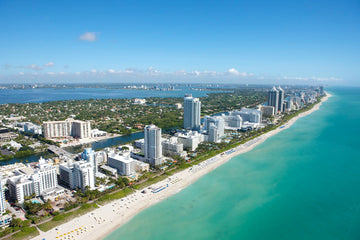
In recent years it’s become clearer than ever that we need to act now to help save our oceans. They are the heart of our planet, a symbol of life and abundance in many cultures.
An organ so vast and deep, we’ve thought dumping trash on and in it for years wouldn’t make a mark. But it has and continues to happen every day with more waste.
Not oblivious to this fact are marine creatures. Fishes, sharks, whales, turtles, and all species that reside in our oceans suffer the impact of our actions without being able to complain or do something about it.
Oceans function as an ecosystem and when one organism gets hurt, the entire food chain suffers.
Nature is very resilient and it’ll find a way to adapt and begin to thrive again, but do we want to be here when that happens? If the answer is yes, we are responsible to make a change.
There are some people trying to do something about this, and as more time passes we humans start to get affected by the decline in ocean health. Fisheries around the world are operating at their maximum with no sustainable room to expand to, and the acidification rate is at its highest levels, making experts think by the turn of the century we could lose more than half of the world's ocean species. Just in the past year in a tiny bay in Florida, there were two massive fish kill events (which happens when entire schools of fishes appear belly up for no apparent reason) since the water was running out of oxygen.
All of the above makes protecting the oceans with law-backed actions more and more important. This is when MPAs come in. Marine Protected Areas (MPA) are not as abundant as you might think.
According to research done by Julie Reimer, Ph.D., only 6.4% of the global ocean is protected, and only 2.7% of it has strong protection against harmful activities, despite scientists calling for strong protection of at least 30%.
“Last year, several countries joined the Global Ocean Alliance and agreed to protect 30% of the ocean by 2030, a target called 30×30. If we can achieve this, we can halt biodiversity loss, ensure fish and food for all, and maintain a healthy ocean that can cope with climate change” says Reimer.
However, this ambitious plan couldn’t become a reality sooner. MPAs have different levels of protection, from minimally protected to fully protected; yet they can help to maintain healthy ecosystems and sustainable fisheries. They are less able to help with other targets, like reducing pollution or the impacts of acidification.
Reimer clarifies that MPA regulations end at their boundaries, but our harmful impacts do not. MPAs are one type of tool in a larger toolbox that also includes fisheries management, shipping regulations, climate change policies, and more. Fishing and recreational practices keep evolving and making our oceans busy, so it is just as important we keep MPAs current and effective and try to make sure they escalate in their level of protection, thus keeping the life cycle, of every creature, going in the healthiest way possible. Because regarding ocean life really, we have no time to waste.
Fishing and recreational practices keep evolving and making our oceans busy, so it is just as important we keep MPAs current and effective and try to make sure they escalate in their level of protection, thus keeping the life cycle, of every creature, going in the healthiest way possible. Because regarding ocean life really, we have no time to waste.





